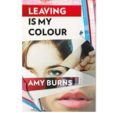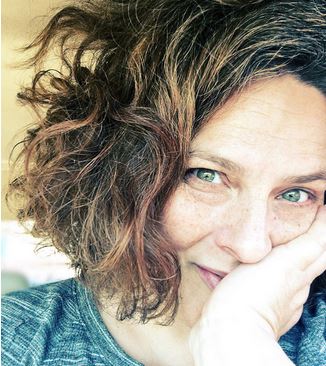“I never thought I’d be the kind of person who could say things like, ‘Yes, I’ve spent a little time in jail,’ or, ‘If you count second cousins then, yeah, I’ve had sex with a relative.’ I also never thought I’d be married and divorced enough times for it to be financially sensible to invest in a courthouse parking permit. But, there you go.”
So observes Rachel Bennett, early in the witty, wickedly funny novel in which she stars: Leaving Is My Colour, by Amy Burns. As soon becomes clear, divorce and jail—the consequence of feeding a drug addiction—are far from Rachel’s only problems. The root of many of them is her deeply dysfunctional family: her well-meaning but mostly absent father; her selfish, judgmental mother; and her older sister, Julie, a bottomless source of disparagement and hostility.
Burns’s comic touch keeps the story from sinking under the weight of this dysfunction. Referring to her own birth, for example, Rachel observes: “Julie had asked for a puppy and [my parents] brought me home instead. She was put on infant homicide watch after my parents caught her trying to squirt dishwashing detergent up my nose. Our relationship hasn’t improved.”
Although Rachel’s family is a significant source of her troubles, her greatest woe seems to be the loss of what she believes to be the love of her life: Jack. A childhood friend and eventual boyfriend, Jack has gone on to marry another woman, having suggested to Rachel that the two of them could carry on an affair on the side—an offer she refuses, understandably. Still, she can’t bring herself to accept the loss of Jack, and a desire to reconnect with him propels much of the narrative.
Through years of heartache over the loss of Jack, one lasting source of support for Rachel is Jack’s younger brother, Phillip, who has also known her for years and has loved her, as Rachel describes, “in an uncomplicated way,” a way that “seemed necessary.” In one scene, when Rachel tells Phillip she can’t accept the end of her relationship with Jack, Phillip replies:
“I don’t even know who the real Rachel is.”
Phillip said, “I do.”
Through exchanges like these, with Phillip and other characters, we learn not only about Rachel’s resistance to attempts at help but also about why such resistance took hold in the first place. For her, it has become a form of self-defense, for good and ill.
In the final chapters of the book, Rachel goes on a mission aimed, ostensibly, at replenishing two absent members of a collection of state spoons, a collection left to her by her grandmother. (In a fit of jealousy, Rachel’s sister destroyed two spoons from the original collection.) But at this stage of the story, Rachel has reached a crisis point, and the mission feels more like a road trip toward oblivion.
In these chapters, and throughout the book, Burns writes eloquently about how, during times of personal turmoil, the chaos in our lives can blind us to anything beyond it. Consequently, something that might sustain, or save, us may be hiding in plain sight. In the interest of not spoiling the story, I won’t say what that something is for Rachel. But I will say that she staggers toward it in a way that makes for compelling reading—by turns, heartbreaking and hilarious.
In these final chapters and elsewhere, Leaving Is My Colour strikes a nice balance between the light and dark, never quite letting go of hope. And while the comic elements offer relief—and insight—they don’t distance us unduly from Rachel and her struggles. As a result, the novel satisfies on many levels.
Would My Pick be Your Pick?
If you're interested in ________, the answer may be "Yes":▪ Witty social novels, along the lines of Jane Austen’s works.
▪ Stories of family conflict
▪ Tales of unrequited love


